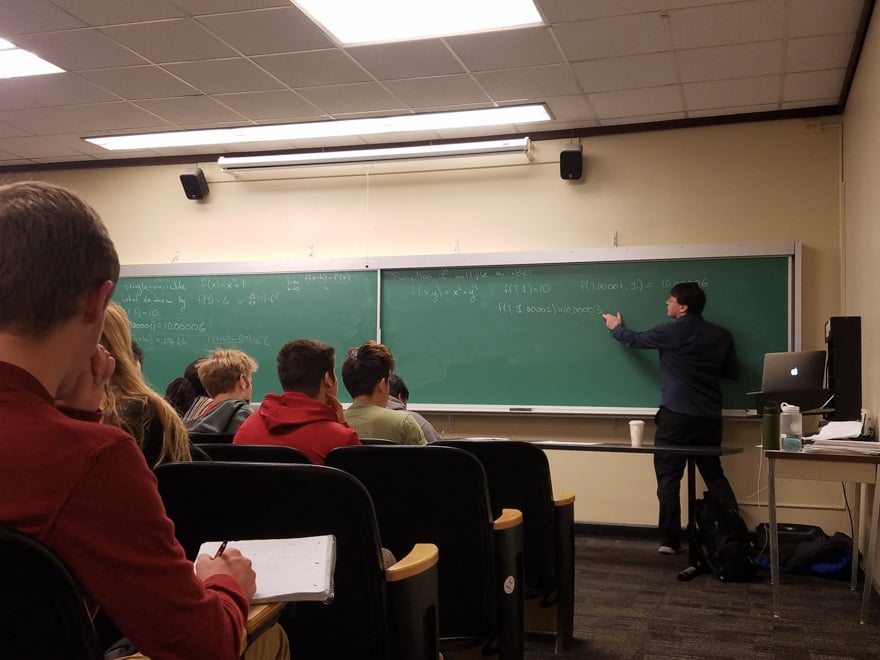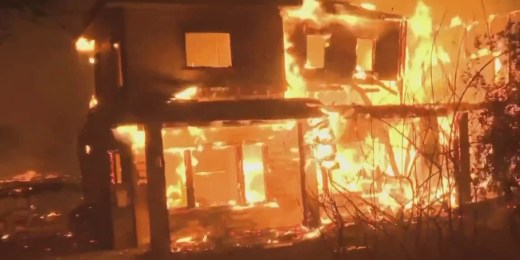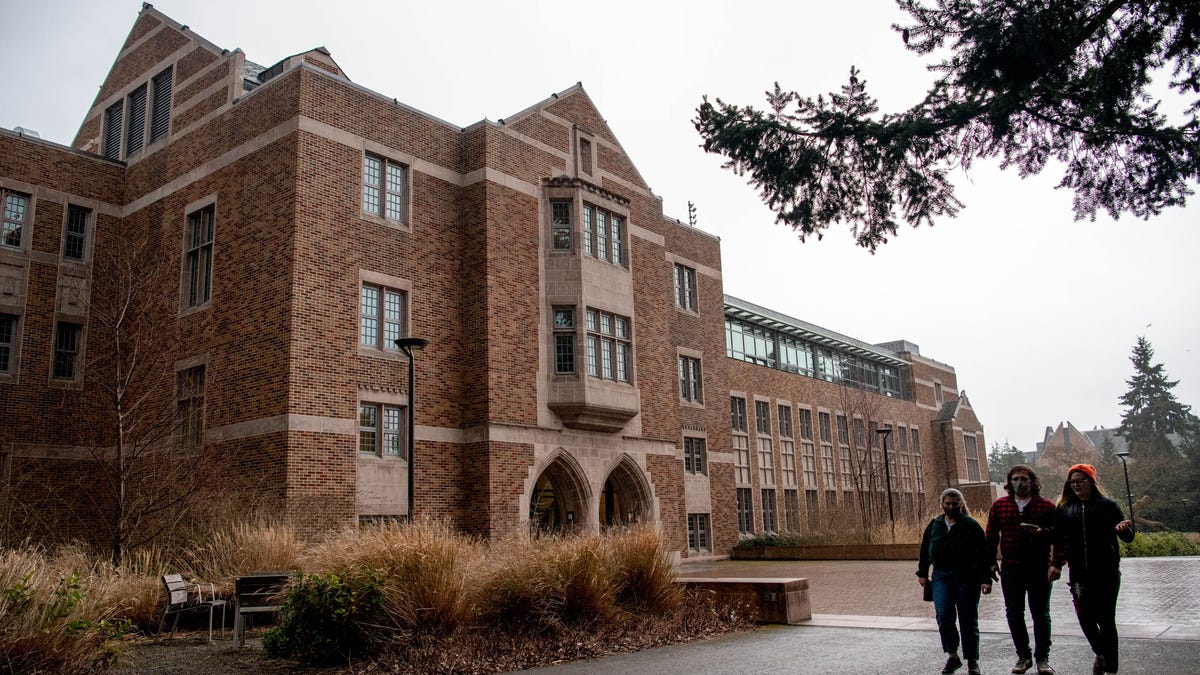California
Complaint defends California Math Framework and Jo Boaler

Amid continued debate on California high school math education, an opposing complaint was filed with the University, in response to concerns raised about Jo Boaler’s contributions to a new math framework.
Duane Habecker, California Mathematics Council central section president, filed a complaint with the Office of the Provost against Stanford math professor Brian Conrad. The complaint, which was filed in late April, criticizes Conrad’s “reckless disregard for academic integrity and the safety of fellow Stanford professor, Dr. Jo Boaler,” according to documents obtained by The Daily.
Conrad is one of a number of public critics of the recently revised California Math Framework (CMF), the document that advises K-12 educators in California, which math education professor Jo Boaler helped to write. Especially drawing controversy, Boaler advocates for offering data science as an alternative Algebra II in high school math requirements — an effort she argues would make high school math more equitable.
Critics like Conrad say that this switch would leave high school students unprepared for college-level math.
In 2023, when the CMF was in the editing process, Conrad created a website to publish comments and concerns with the CMF. The recent complaint delves into some concerns raised by critics on Boaler’s research.
Conrad wrote in an email to The Daily that he was not aware about the complaint lodged against him nor the University’s response. In response to the complaint, he wrote, “Anyone who looks at what I have written or said on these matters can see that I never singled out any specific CMF author, contrary to what is claimed.”
The complaint follows an anonymous complaint filed in March against Boaler, accusing her of citation misrepresentation in both her individual work and her work in helping revise the CMF. According to Habecker, it stems from criticism that moves beyond the research to personal attacks.
The complaint raises twelve examples of Conrad’s critiques paired with Habecker’s response countering these critiques. Habecker wrote that Conrad “has gone beyond critiquing the research and ventured into stochastic terrorism through indirect and vague attacks on Professor Jo Boaler’s work, which has led the public to myopically targeting Dr. Boaler rather than the entire CMF writing team.”
Boaler has received threats to herself and her family due to her involvement in the CMF, she wrote on her Stanford profile.
Neither complaint will receive a formal University investigation.
“We received this information and believe this matter is one properly resolved through scholarly debate rather than through a formal university process,” wrote University spokesperson Dee Mostofi. “The university does not take a position in these matters.”
The first anonymous complaint against Boaler inspired Habecker to file his own complaint, Habecker said, helping him realize that it was a tool he could use to voice his concerns about the lack of scholarly debate he saw in both the anonymous complaint and Conrad’s public criticisms with the CMF.
The fact that the original complaint was anonymous “runs against the whole point of conversation and discourse and disagreeing,” Habecker said. “Math is a wonderful topic to disagree about and have real, authentic, meaningful conversations.”
He said that he thinks the CMF is one of the best resources for high school math teachers, and Conrad is “undermining people’s faith in the CMF.”
Habecker’s complaint takes issue not only with Conrad’s website, but also with Conrad’s recent testimony at a California senate hearing about a “math excellence package” that would add six members to the California State Board of Education’s Instructional Quality Commission.
Disagreeing with Habecker’s characterization, Conrad countered that his testimony was not an effort to discredit the math framework. This claim “is contradicted by the fact that I never mentioned the CMF,” Conrad wrote.
Boaler has continued her support for the CMF, despite its critics.
“It is my understanding that [Habecker’s] complaint has been filed in defense of everyone who worked on all stages of the CMF, the statutory process and the K-12 educators and students who will be impacted,” she wrote in an email to The Daily. “Insofar as [Habecker’s] submission might apply to my situation, I will be grateful if his viewpoint is considered.”

California
New system alerts L.A. County authorities when gun owners face orders to give up weapons

Officials announced Thursday that Los Angeles County has automated the process of notifying law enforcement agencies when people who violate restraining orders fail to comply with judges’ orders to hand their guns over to authorities.
Previously, court clerks had to identify which of the county’s 88 law enforcement agencies to notify about a firearm relinquishment by looking up addresses for the accused, which could take multiple days, Presiding Judge Sergio C. Tapia II of the L.A. County Superior Court said during a news conference.
Now, “notices are sent within minutes” to the appropriate agencies, Tapia said.
“This new system represents a step forward in ensuring timely, consistent and efficient communication between the court and law enforcement,” he said, “helping to remove firearms from individuals who are legally prohibited from possessing them.”
According to a news release, the court launched the platform, which the Judicial Council of California funded with a $4.12 million grant in conjunction with the L.A. County Sheriff’s Department and district attorney’s office, and the L.A. Police Department and city attorney’s office.
The court also rolled out a new portal for law enforcement that “streamlines interagency communications by providing justice partners with a centralized list of relevant cases for review” and allows agencies “to view all firearm relinquishment restraining order violations within their jurisdiction,” according to the release.
The new digital approach “represents a major enhancement in public safety,” Luna said.
“Each of those firearms,” he said, “represents a potential tragedy prevented or a domestic violence situation that did not escalate, a life that was not lost to gun violence.”
California
Clean energy program in California turns waves into renewable energy

-
Now Playing

Clean energy program in California turns waves into renewable energy
02:07
-
UP NEXT

Drone video shows Hurricane Melissa damage in Jamaica
01:16
-

National Geographic releases its must see destinations for 2026
03:56
-

Space-based solar power emerging as alternative as other solar projects shut down
03:29
-

IVF is helping coral reef restoration with a reproductive boost
02:21
-

Robotic rabbits combat Florida’s invasive pythons
00:31
-

Mother says son injured after octopus latched on during aquarium visit
02:53
-

New report details rising cost of weather disasters
02:29
-

’24 hours too late’: Fmr. FEMA official says Trump admin delays “cost lives” during Texas floods
06:41
-

Environmental Protection Agency aims to erase greenhouse gas limit on power plants
03:16
-

Artists Build Underwater Installations to Protect Coral Reefs
02:59
-

Federal funding cuts impact scientific research in the ocean
03:59
-

Record seaweed bloom stinks up prime Caribbean vacation beaches
02:56
-

Scientists capture sharpest-ever view of the sun’s outer atmosphere
04:00
-

Multiple whales found dead in San Francisco Bay area
01:58
-

“The Reefline” project aims to protect Miami Beach’s coastline and marine life
01:30
-

Environmental scientist discusses toxic algae outbreak in California and new advisories
03:53
-

Can ecotourism fill the void with drastic cuts to science funding?
03:42
-

How whales and their microscopic neighbors help fight fossil fuel pollution
02:51
-

Mount Spurr eruption possible as scientists detect elevated activity
02:35
Stay Tuned NOW
-
Now Playing

Clean energy program in California turns waves into renewable energy
02:07
-
UP NEXT

Drone video shows Hurricane Melissa damage in Jamaica
01:16
-

National Geographic releases its must see destinations for 2026
03:56
-

Space-based solar power emerging as alternative as other solar projects shut down
03:29
-

IVF is helping coral reef restoration with a reproductive boost
02:21
-

Robotic rabbits combat Florida’s invasive pythons
00:31
California
Did Prop 50 pass in California? What to know about redistricting measure

Californians cast Prop 50 ballots in fight over redistricting.
Redistricting and voting rights take center stage as Californians vote on Proposition 50.
California voters on Nov. 4 passed Proposition 50, a constitutional amendment that allows a redrawing of the state’s congressional district boundaries, a major win for Democrats.
The measure, which was pushed by Democratic Gov. Gavin Newsom, permits California’s Democratic state lawmakers to temporarily redraw the state’s U.S. congressional districts to increase their party’s chances of winning more seats in Congress.
After the 2030 U.S. Census, the state will return to using a nonpartisan commission to draw their congressional district boundaries.
Prop 50’s passing essentially negates five new GOP-leaning congressional districts Texas created earlier this year at the urging of President Donald Trump. Here’s what to know.
Did Prop 50 pass?
Yes, Proposition 50 passed in California. The measure authorizes a temporary redrawing of the state’s congressional districts ahead of the 2026 midterms.
Democrats hope the amendment will offset a Republican-led redistricting in Texas. With California and Texas having the largest Democratic and Republican delegations, respectively, they hold more weight in who controls the U.S. House of Representatives. Republicans currently hold a razor-thin majority in the U.S. House.
Redistricting typically happens at the start of every decade, but some states are prohibiting more mid-decade changes.
“What a night for the Democratic party,” Newsom said after polls closed on Nov. 4.
Trump denounced the results in a post on Truth Social.
“The Unconstitutional Redistricting Vote in California is a GIANT SCAM in that the entire process, in particular the Voting itself, is RIGGED,” he wrote.
Prop 50 election results
Over eight million Californians turned out to vote for Prop 50, according to data from the California Secretary of State.
More than 63% of voters elected to pass Prop 50, while roughly 36% voted against it.
Melina Khan is a national trending reporter for USA TODAY. She can be reached at melina.khan@usatoday.com.
Contributing: Sarah D. Wire, Ramon Padilla and Ignacio Calderon, USA TODAY
-

 Milwaukee, WI1 week ago
Milwaukee, WI1 week agoLongtime anchor Shannon Sims is leaving Milwaukee’s WTMJ-TV (Channel 4)
-

 Culture1 week ago
Culture1 week agoVideo: Dissecting Three Stephen King Adaptations
-

 Austin, TX1 day ago
Austin, TX1 day agoHalf-naked woman was allegedly tortured and chained in Texas backyard for months by five ‘friends’ who didn’t ‘like her anymore’
-

 Seattle, WA1 week ago
Seattle, WA1 week agoFOX 13’s Aaron Levine wins back-to-back Jeopardy! episodes
-

 Seattle, WA5 days ago
Seattle, WA5 days agoESPN scoop adds another intriguing name to Seahawks chatter before NFL trade deadline
-

 Education1 week ago
Education1 week agoOpinion | New York City Mayoral Candidates: Who Would Be Best?
-

 San Diego, CA1 week ago
San Diego, CA1 week agoAdd Nick Hundley, Ruben Niebla to list of Padres’ managerial finalists
-
Business1 week ago
Disneyland Resort lays off 100 people in Anaheim




















